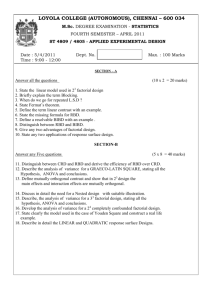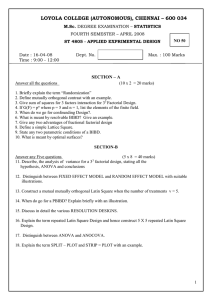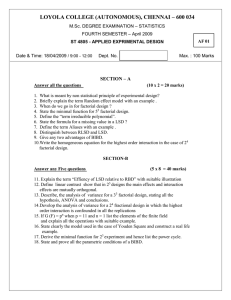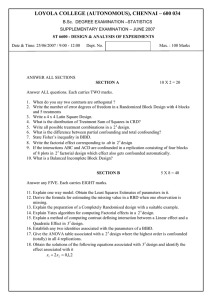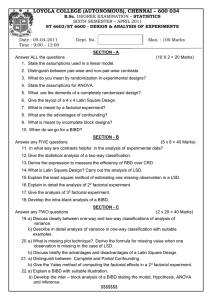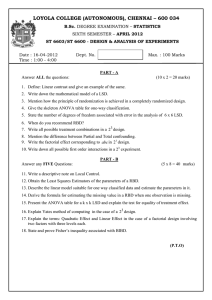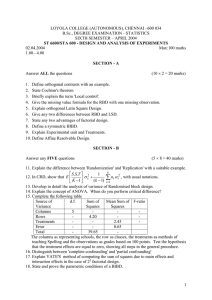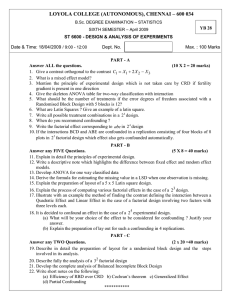LOYOLA COLLEGE (AUTONOMOUS), CHENNAI – 600 034
advertisement
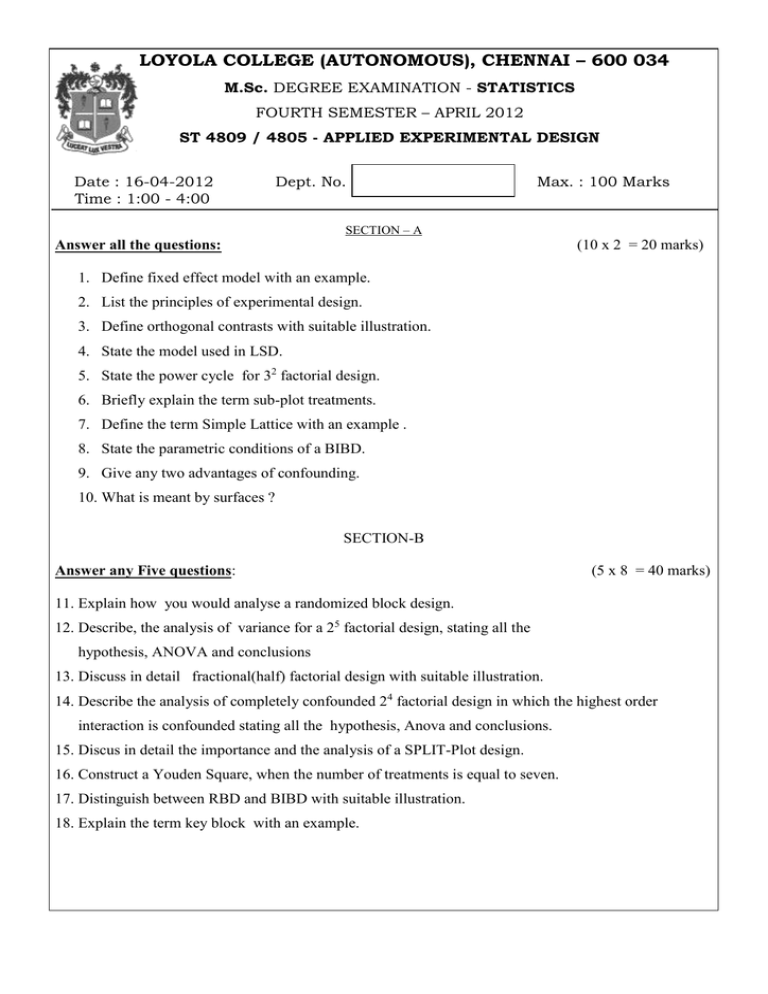
LOYOLA COLLEGE (AUTONOMOUS), CHENNAI – 600 034 M.Sc. DEGREE EXAMINATION - STATISTICS FOURTH SEMESTER – APRIL 2012 ST 4809 / 4805 - APPLIED EXPERIMENTAL DESIGN Date : 16-04-2012 Time : 1:00 - 4:00 Dept. No. Max. : 100 Marks SECTION – A Answer all the questions: (10 x 2 = 20 marks) 1. Define fixed effect model with an example. 2. List the principles of experimental design. 3. Define orthogonal contrasts with suitable illustration. 4. State the model used in LSD. 5. State the power cycle for 32 factorial design. 6. Briefly explain the term sub-plot treatments. 7. Define the term Simple Lattice with an example . 8. State the parametric conditions of a BIBD. 9. Give any two advantages of confounding. 10. What is meant by surfaces ? SECTION-B Answer any Five questions: (5 x 8 = 40 marks) 11. Explain how you would analyse a randomized block design. 12. Describe, the analysis of variance for a 25 factorial design, stating all the hypothesis, ANOVA and conclusions 13. Discuss in detail fractional(half) factorial design with suitable illustration. 14. Describe the analysis of completely confounded 24 factorial design in which the highest order interaction is confounded stating all the hypothesis, Anova and conclusions. 15. Discus in detail the importance and the analysis of a SPLIT-Plot design. 16. Construct a Youden Square, when the number of treatments is equal to seven. 17. Distinguish between RBD and BIBD with suitable illustration. 18. Explain the term key block with an example. SECTION-C Answer any Two questions: (2 x 20 = 40 marks) 19.a) Describe, the analysis of variance for a 32 factorial design, stating all the hypothesis, anova and conclusions. b)Construct Mutually orthogonal Latin squares (MOLS), when the number of treatments is equal to five. (10+10 Marks) 20. a) Explain the the method of Steepest ascent, with neat diagram. b) Discuss the first order and second order response surface designs.(8+12 Marks) 21. a) Construct a PBIBD with 3 associate classes stating all the parametric conditions b) Explain the Group divisible design. (12+8-Marks) 22 Write shorts on the following a) Incomplete block design b) Replication c) Industrial applications of experimental designs d) FERMAT’S theorem. (5+5+5+5-Marks) **********
